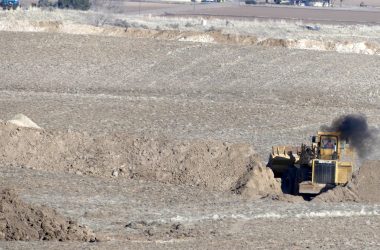ONTARIO – An Ontario entrepreneur aims to make building homes in Malheur County faster, cheaper and with fewer people by using 3D printing technology.
Shawn McKay, the former owner of Burnt River Farms Cannabis Dispensary in Ontario, said his company, Layer Line 3D, is working on Malheur County’s first 3D-printed home in an unincorporated part of the county.
McKay’s company is also behind Oregon’s first 3D-printed home in John Day. The design calls for a 1,000-square-foot house with two bedrooms and two bathrooms. This is the company’s first home and the first done this way in the entire state.
He showed off these plans for the first home to Gov. Tina Kotek last month during her One Oregon Listening Tour on July 20.
McKay said his company has already produced a proof-of-concept home that lawmakers on the Oregon Legislature’s Joint Ways and Means Committee toured in April.
McKay said the company has been using the spec home to help familiarize state building code officials with the 3D printing process. Once the state comes up with a master plan for building 3D-printed homes, that would allow the firm to scale up its operations dramatically, McKay said
The company, which employs about 10 people, leased property on the old Ontario Golf Course. McKay said the company plans to build a training center to teach others how to use a 3D printer.
What is a 3D printer?
Sometimes called additive manufacturing, 3D printing is a process of making an object by depositing material one thin layer at a time.
Invented in the 1980s by engineer and physicist Chuck Hull, the technology has exploded in the last decade.
While the technology has been widely used, McKay said the government permitting process has yet to catch up. According to McKay, no structural code exists on the state or national level for 3D-printed construction.
“We’ve essentially had to help the state write that new section of structural code that accommodates 3D printed construction,” McKay said.
So far, McKay said the company has laid the Malheur County home’s foundation. McKay declined to give the location of the home Layer Line 3D is building, nor would he give the place of the Ontario spec home, which he said sits in a nondescript building. He said he was withholding those details to protect his company’s intellectual property.
Nonetheless, McKay said 3D printed construction and automation are the future in home construction. With 3D printing, he said, a home can be built in 30 days, in what would take standard crews 3 months, using a half dozen people, instead of 15.
“This is dream big stuff,” he said in talking about how 3D home construction is scalable.
Asked about how comparable the cost of building a home using traditional construction methods vs. 3D-printed, McKay said 3D construction is certainly comparable to traditional. The best indicators, he said, are the “finishes.”
He said finding labor for construction workers is a challenge. The median age of a construction worker is over 40 and workers are retiring faster than employers can recruit them. Meantime, he said the state is being tasked to ramp up the construction of new homes to stem Oregon’s housing shortage and homelessness crisis.
“If we already have a labor shortage,” he said, “and we have a mandate to increase the production of homes, we have to look at more efficient ways of doing construction. That’s where 3D printed construction and automation come in.”
NEWS TIP? Send an email to [email protected].
SUPPORT OUR WORK – The Malheur Enterprise delivers quality local journalism – fair and accurate. You can read it any hour, any day with a digital subscription. Read it on your phone, your Tablet, your home computer. Click subscribe – $7.50 a month.




